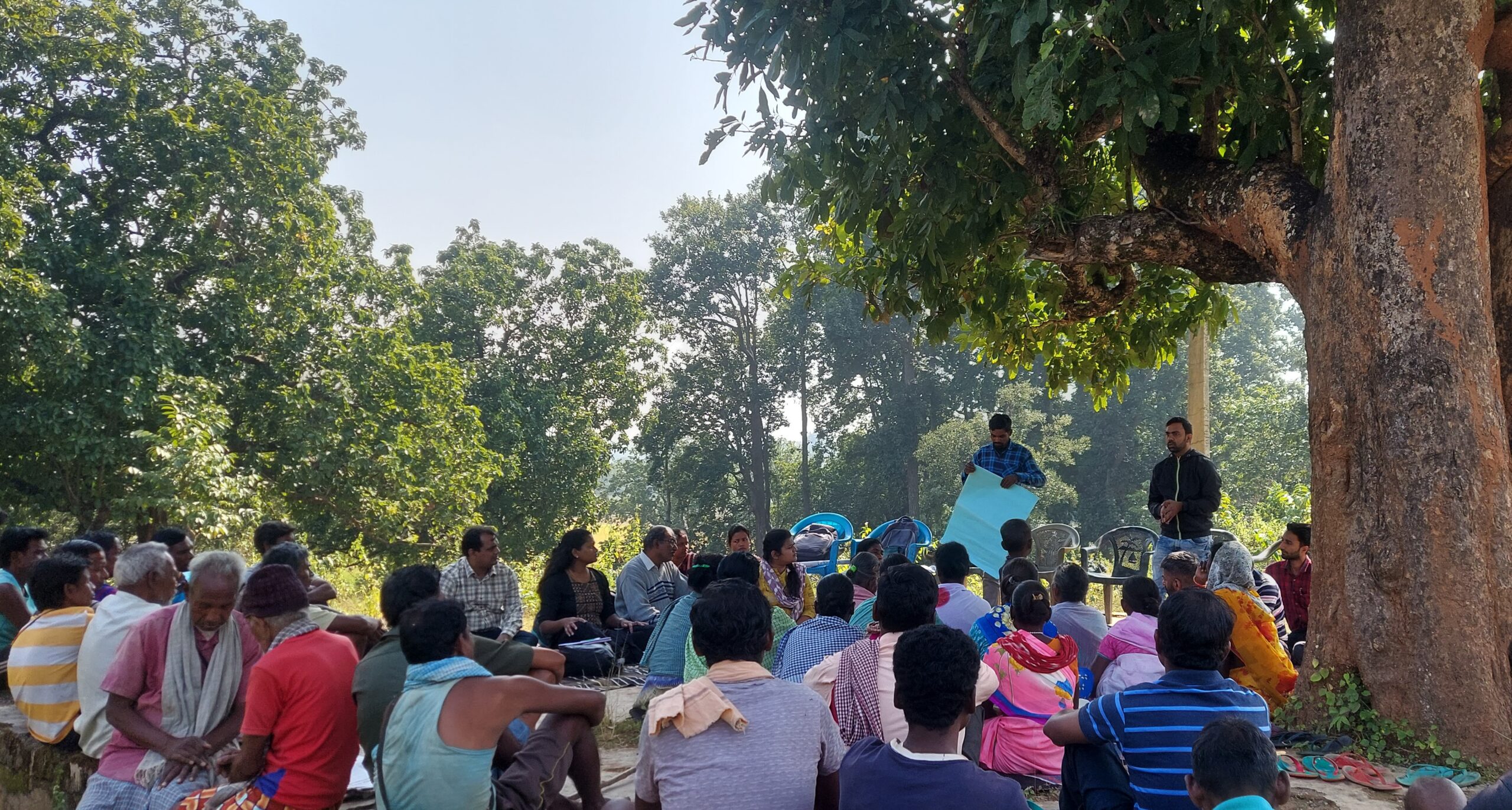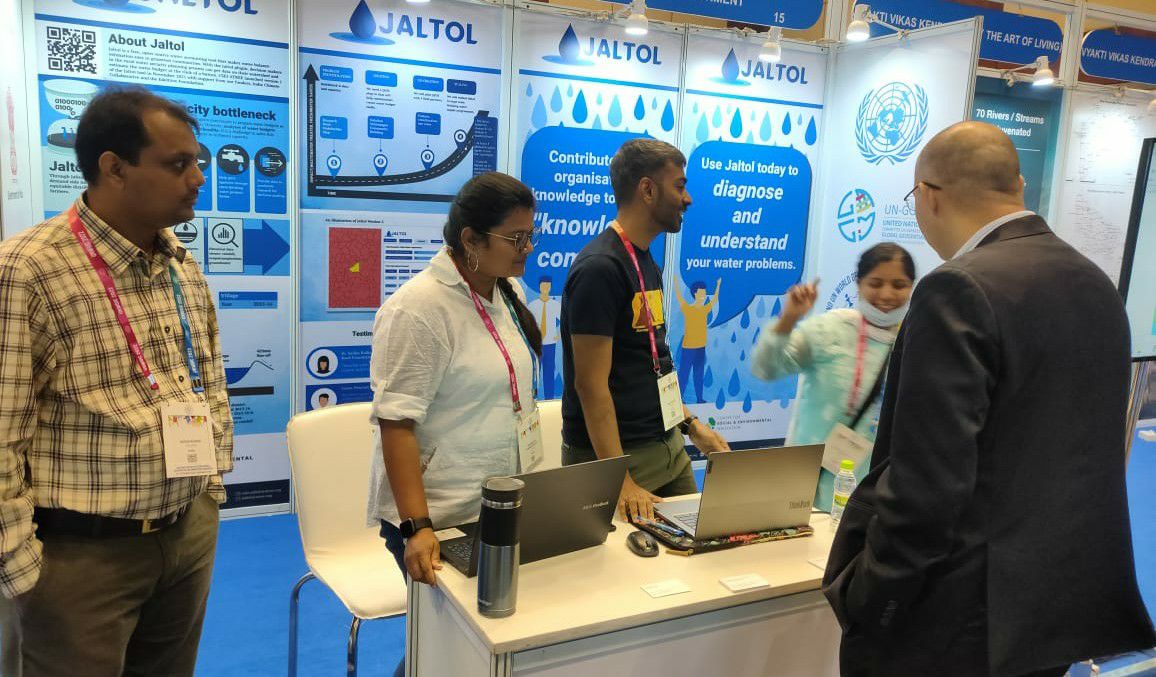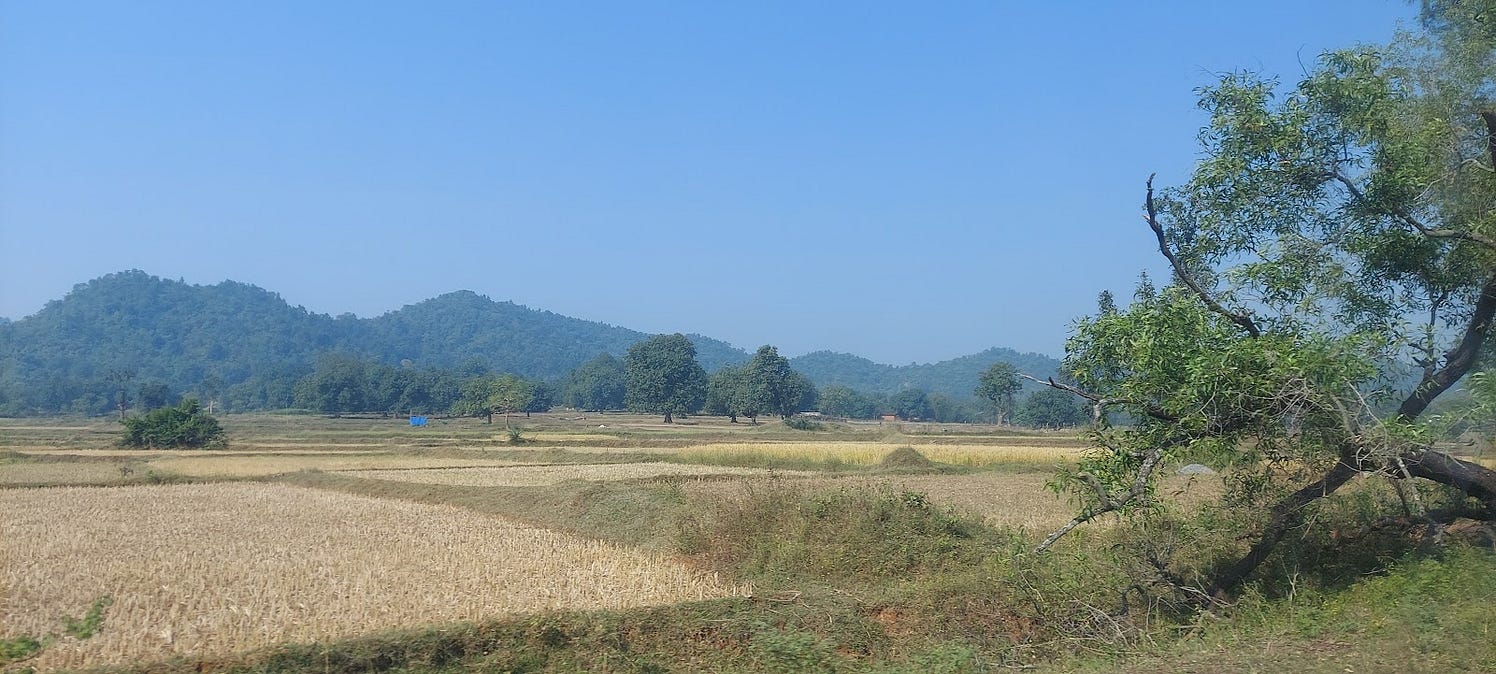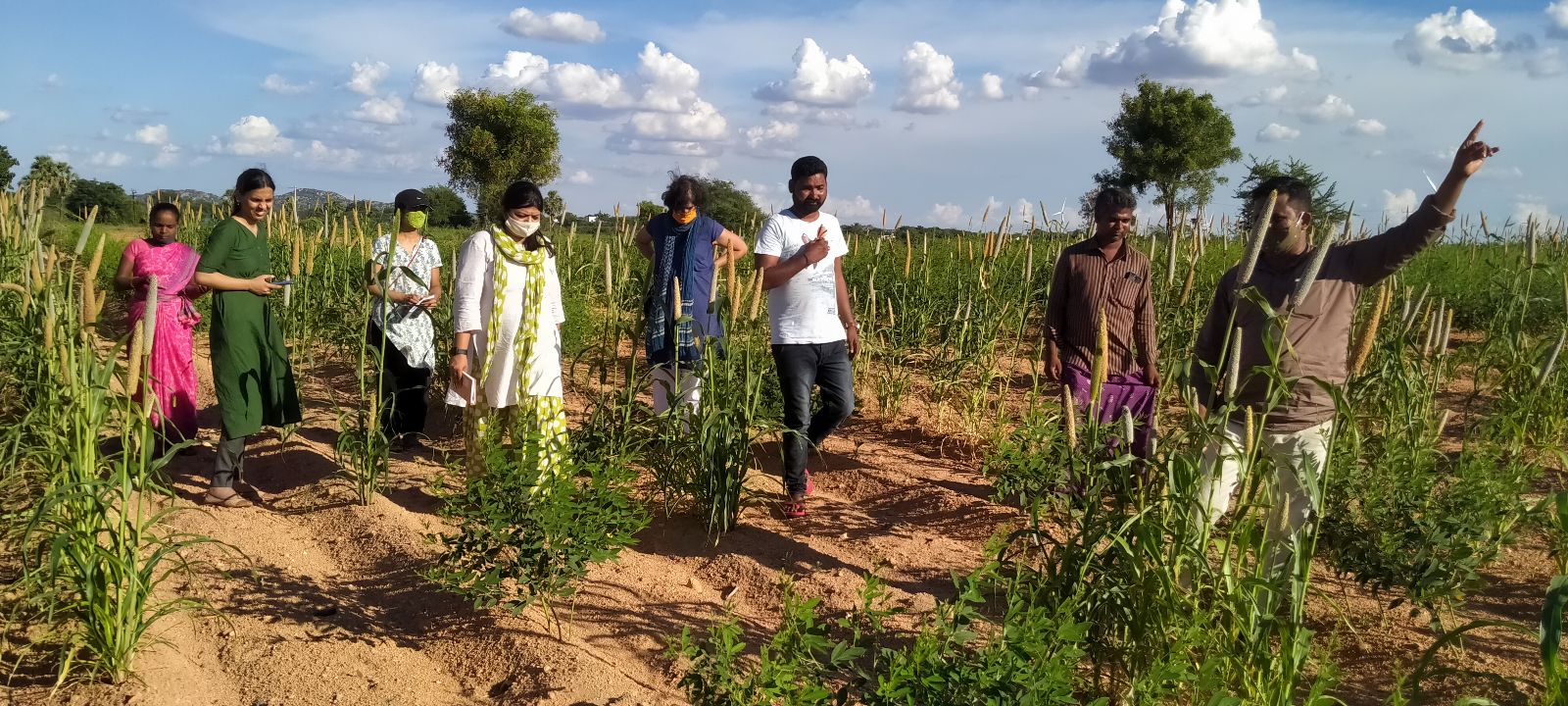From Trainers to Playbooks: Insights on Improving the Green Rural Economy Platform
Members of multiple environmental and development organisations discuss different aspects of GRE at the launch. Photo by RB Productions.
There is consensus on the broad rationale behind a Green Rural Economy platform. Now, we get to the hard part – how do we start sketching out the details and breathing life into this blueprint? On January 23, we launched the platform at a two-day workshop in Bengaluru to a group of civil society organisations. This was the first step to establish a consortium that curates knowledge in usable formats and facilitates spaces for collaboration to drive sustainable change across rural India.
In Part 1, we described the problem statement – a lot of undocumented tacit knowledge resides with experts scattered across the country, but is not disseminated at a larger scale. In this blog, we take a closer look at what exactly this platform entails and summarise some of the key suggestions and feedback that came up during the two-day workshop.
A platform that is neutrally-owned and inclusive
A key part of this initiative is that it is not owned by a single entity, it is a consortium with a purpose to ensure that all the knowledge that we hold as individual organisations can be documented and shared for uptake at scale. It is also cognisant of the fact that contexts vary, from how much it rains to the kind of governance and social structures in place.
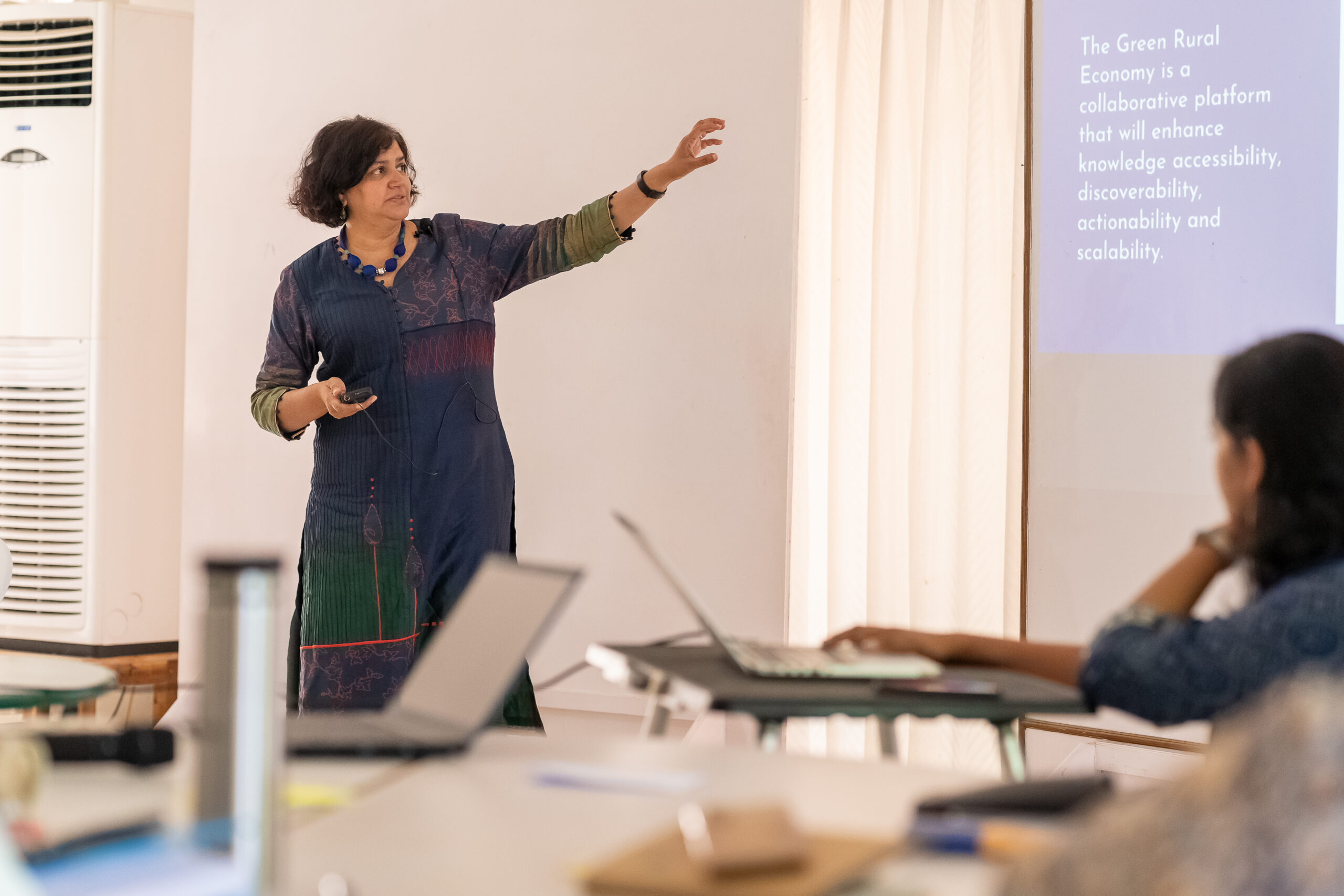
WELL Labs Executive Director Dr Veena Srinivasan presents the Green Rural Economy platform at the two-day workshop. Photo by RB Productions.
Executive Director of WELL Labs, Veena Srinivasan, said that it is because contexts change that the platform also cannot be limited in how it’s engineered. ‘Everything on this platform will not be digital; knowledge exchange will go beyond that… With knowledge, you need connections – service providers, experts, answers to questions.’
Read | GRE Clinics: Matchmaking in the Development Sector
The design interface of the platform, in its entirety, was designed by Platform Commons, an organisation that builds custom software for the non-profit sector. In addition, they will also spearhead future development of the platform. Aikyam fellows (previously Tech4Good/T4G Labs), a non-profit that aims to make technological solutions more accessible for grassroots organisations, created the prototype.
Working groups discussed first impressions and possible improvements
We launched the website and shared a QR code with the audience for them to start exploring this first iteration of the digital platform. Rainmatter Foundation’s Sameer Shisodia encouraged attendees to go over the different themes listed on the website, from backyard poultry to millet cultivation. Once users clicked on a theme, a number of options opened up that reflected all the different features that the platform meant to host – events, playbooks, vendors, trainers, as well as partners with expertise.
After that, we split workshop attendees into groups to weigh in on the following main pillars of the platform, and the challenges and opportunities they foresee.
Playbooks: How-to manuals on various themes to enhance rural livelihoods and the environment.
Vetting and quality control
To ensure that the guides are based on actual work, two options came up – either only vetted organisations can upload documents or the submission process is opened with some degree of moderation on what actually makes it to the platform. On the other hand, there was also a fear of scrutiny and interference by state actors. Some practitioners could feel wary because their methods, though effective on the field, may not have an academic publication backing it up.
Incentives
For organisations to actually contribute playbooks, there need to be incentives in place. Firstly, because being a vetted contributor on the platform could be aspirational as it gives credibility. Secondly, it also provides an opportunity for organisations and experts to be discovered and asked to participate in events, which further improves their visibility. Finally, attribution to the original author can demonstrate scalability of the organisation’s playbooks as it is used across geographies.
Read | Field Notes from Lohardaga: How a Grassroots Organisation in Jharkhand Shares Knowledge
Format
Participants raised concerns about the consistency of these playbooks and the need to have standardised templates in places. They also emphasised on the need to structure playbooks in a way that the content is not technical, practice-oriented and thus easy to use, and filled with pictures and examples that can clarify complex processes. Video summaries could also help distil the subject for a larger audience – this was a refrain throughout the feedback sessions.
However, some talked about the lack of capacity in terms of converting the knowledge they’re sitting on, and fitting it into the playbooks template.
Complexity
Another suggestion focused on having layers of complexity. The option of adding ‘light content’ allows an organisation to gauge interest in the subject before expending the effort to flesh out the playbook. Moreover it could lead to connections, with a knowledge seeker reaching out to the organisation for support.
Accessibility
Language is an important point we are already aware of and participants reiterated this during the working sessions. Attendees also pointed out that users from different parts of the country may have different terms for a tool or approach. This means that there may be value in glossaries that capture the diversity of language in India. Moreover, to make the platform even more user-centric, the suggestion to include a decision tree came up, as it would help novices know what to ask to understand a subject better.
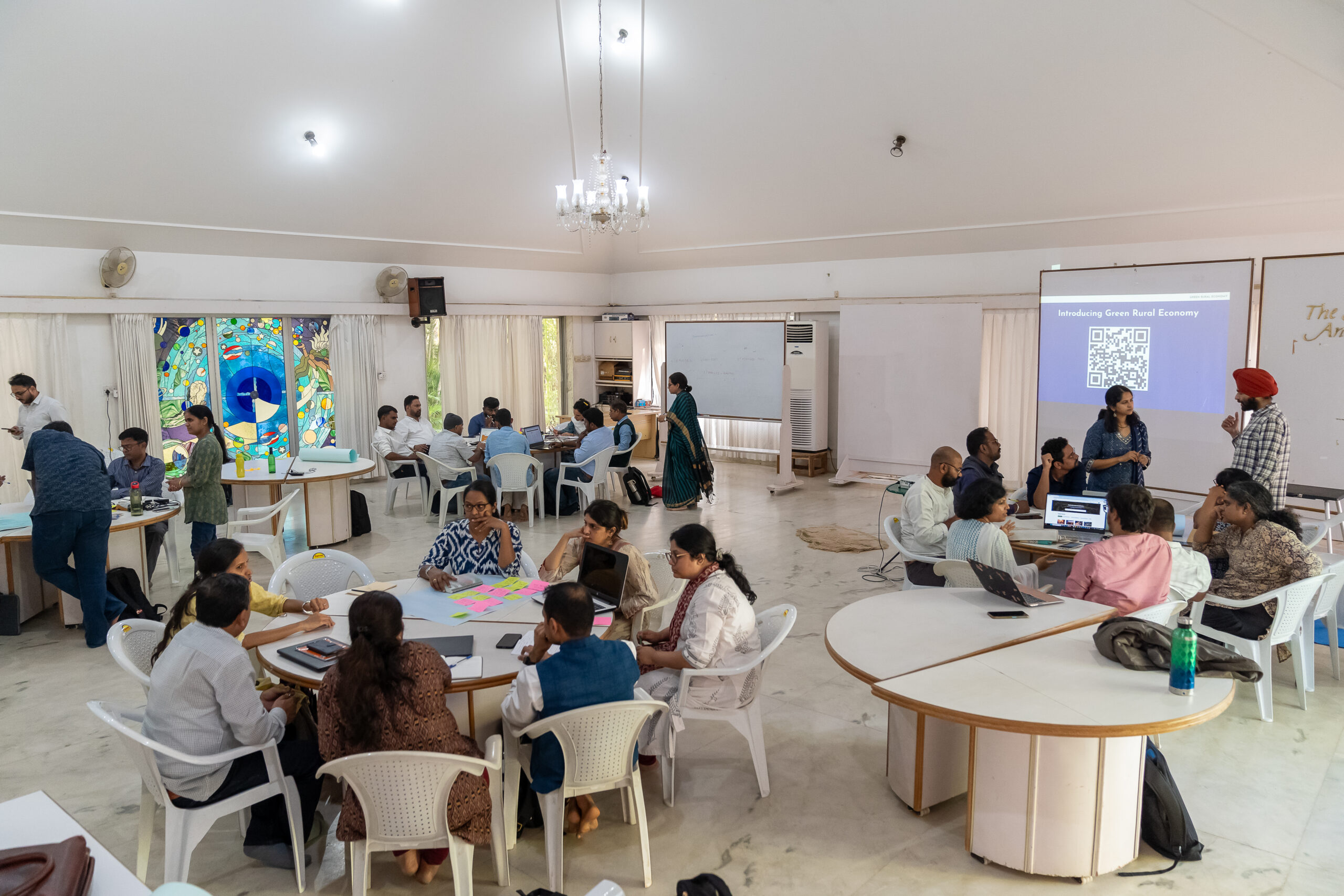
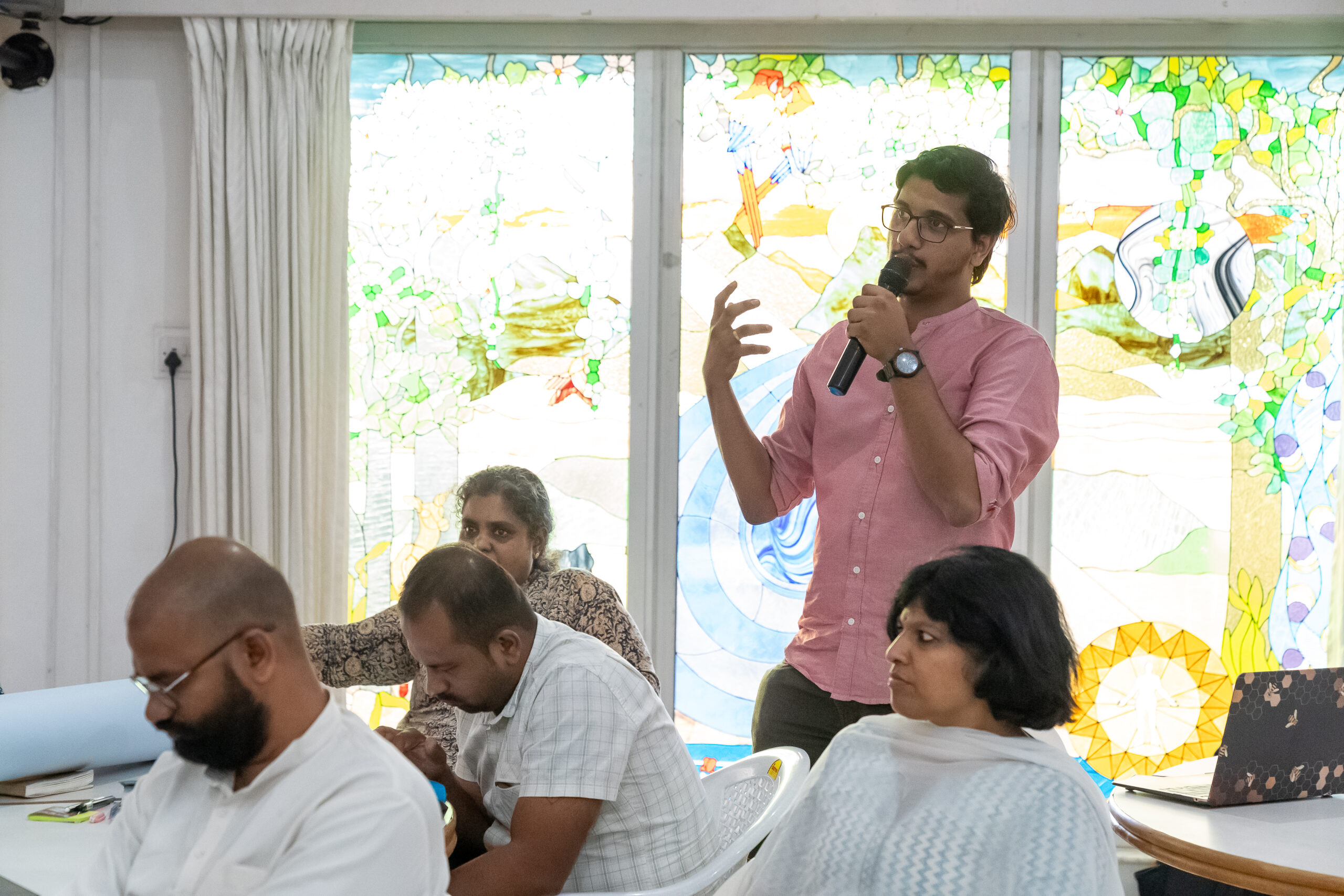
Participants at the launch of the Green Rural Economy platform discuss the features of the platform and how it could be improved to effectively address the needs of grassroots organisations and individuals working in rural areas. Photo by RB Productions.
Service directories would list vendors and trainers
Credentials
Similar to playbooks, participants here, too, questioned how we would ensure that the trainer details furnished on the platform are reliable. Participants discussed mandating that trainer credentials are visibly captured, including their experience or qualifications, language fluency, location and cost of training sessions.
Levels
As we discussed having levels of complexity to playbooks, we also explored whether trainers too could be categorised based on need. For example, a trainer with a high degree of expertise may not be able to visit often but they can conduct workshops and address rarer problems that would require their skills to resolve. Field trainers would be more present and larger in number. Moreover, they can carry out less complex trainers but more frequently. The need to classify, according to the services they provide and the level they operate, came up in terms of vendors too.
Read | Five Lessons We Learned As An Ecosystem Builder
Accessibility
Attendees raised concerns that access to vendors is a problem in remote areas. In essence, even if a vendor helps set up a solution, they may henceforth be less accessible for support and troubleshooting. This would require vendors to train CSO staff so that they are able to handle basic problems. One observer noted that organisations were open to hiring trainers for new areas/ but for core work they preferred training their team on these skills.
Miscellaneous
A range of other issues also found their way into the discussion. One point focused on incorporating a tendering process to help with selecting vendors objectively. Additionally, referrals from other CSOs on tried-and-tested vendors and trainers, coupled with resources or logistical partners they used during implementation would also help an organisation make use of this platform.
In addition, participants mulled over categorising the directories as well across themes, geographies, type of service (manufacturer, retailer, O&M), customer service support, and the kind of training offered.
Events and Forums: Spaces to promote knowledge exchange and expert advice
Curation
Participants spoke about the flurry of events that they are invited to, exposing them to more resources than they can sift through and cull out. They raised the question of curating events to ensure its usefulness to under-capacitated organisations.
Types
Participants also raised specific ideas for events such as organising ‘tele-repair’ training sessions and mela of sorts that would allow multiple CSOs to gather and showcase their products and services. Given that events could be resource-intensive, the need to have smaller, asynchronous exercises for organisations to familiarise themselves with each other’s work is another idea the platform could take into consideration.
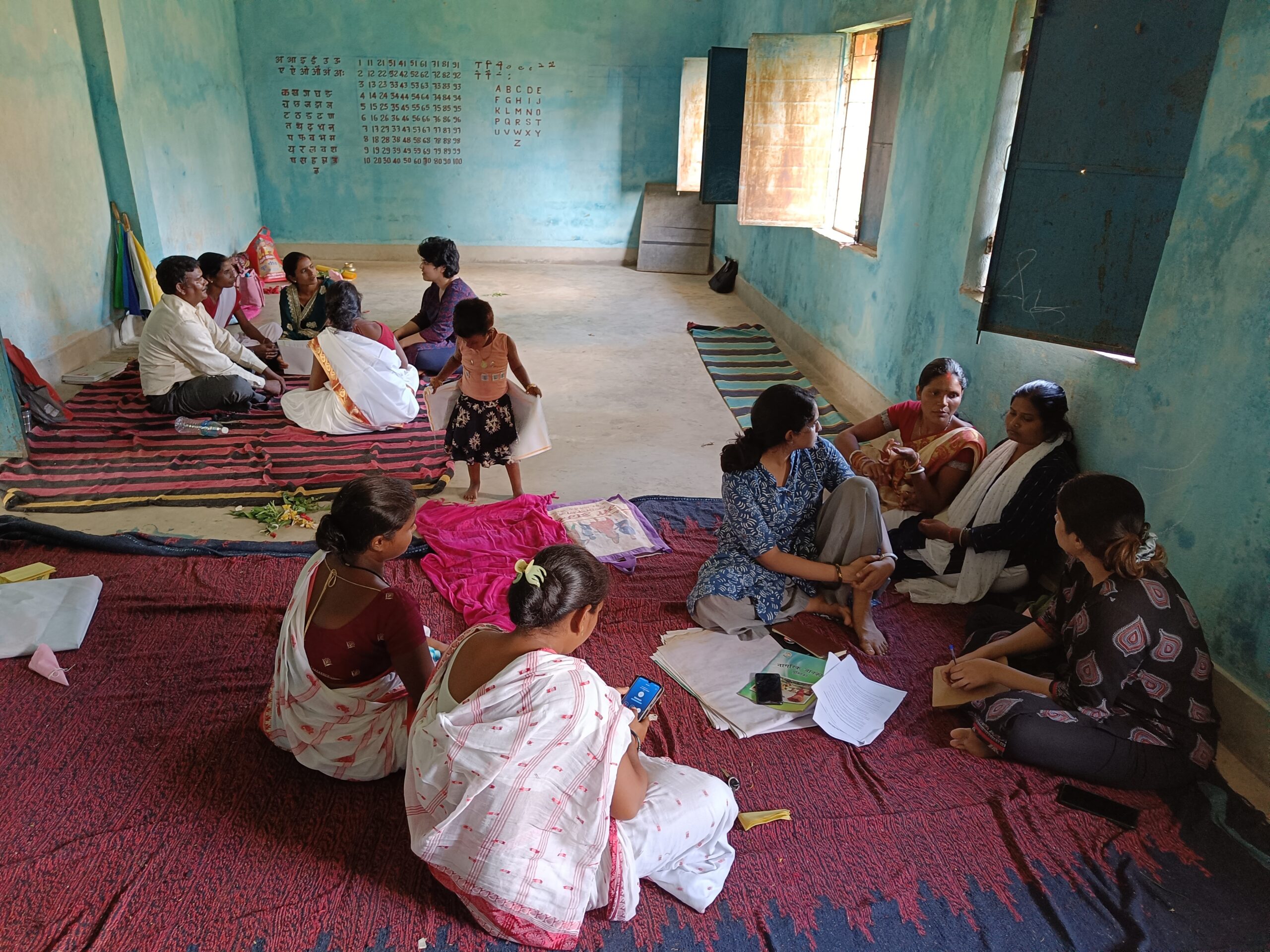
WELL Labs researchers speak to Community Resource Persons and PRADAN’s field staff in Lohardaga, Jharkhand, to understand how they access knowledge. Credit: Partik Kumar.
This could also be in the form of bi-monthly webinars where an organisation can present on an activity they undertook and the challenges they faced followed by a brainstorming session where others can weigh in and help out. The discussion on curating of the events vertical also covered the possibility of adding features such as a ‘Give’ and ‘Ask’ sections, where people can make it clear what support or service they need or what they have expertise in and can offer.
These were valuable insights that will be used to improve the GRE platform
These insights and suggestions are invaluable as these come directly from potential users and organisations that the GRE platform is meant to benefit. Points regarding the website itself came up as well. This includes, as also mentioned above, language options and an intuitive mobile version as this is most likely to be the medium that people on the ground will use. Participants also talked about having chatbots that would allow people to ask questions, and subscription services that would relay major new updates about an intervention or field.
The workshop around the launch achieved one of the main goals – to collaboratively build and nurture this platform in a way that it actually benefits everyone who is a part of it.
Read | The Launch of a Consortium-Led Platform to Build Green Rural Economies
As next steps, the consortium will continue its research and conversations with grassroots organisations to define the most pressing whats – user needs, pain points, barriers to adoption – and ideate and test ways to alleviate these problems. Based on the ‘honeycomb of livelihoods’ we discussed in the previous blog, working groups at the event comprised the organisations who attended the workshop. We split these groups according to themes – from farm inputs to natural resource management. The immediate goals of these groups include consolidating known solutions from partner organisations as well as expand and source solutions from beyond our immediate network.
We will continue refining our approach to transforming systems through the Green Economy consortium. If you would like to know more about the platform or become a part of it, please write to [email protected] or [email protected].
Attendees at the event included representatives from BuzzWomen, Bharat Rural Livelihood Foundation, Gram Vikas, Lipok Foundation, Industree, Pradan, Rainmatter Foundation, Solid Waste Management Round Table (SWMRT), Art of Living’s Sri Sri Rural Development Programme (SSRDP) Trust, Himalay Unnati Mission (HUM), Shivganga Samagra Gramvikas Parishad (Jhabua), Waste Warriors, WELL Labs and Council on Energy, Environment and Water (CEEW).
This event summary was collated by Smita Kumar, Lakshmi Pranuti Choppakatla, Meghna Majumdar, Srushti Paranjpe and Aditya Maruvada based on discussions held at the workshop.
Edited by Kaavya Kumar
If you would like to collaborate, write to us. We would love to hear from you.
Follow us and stay updated about our work:


